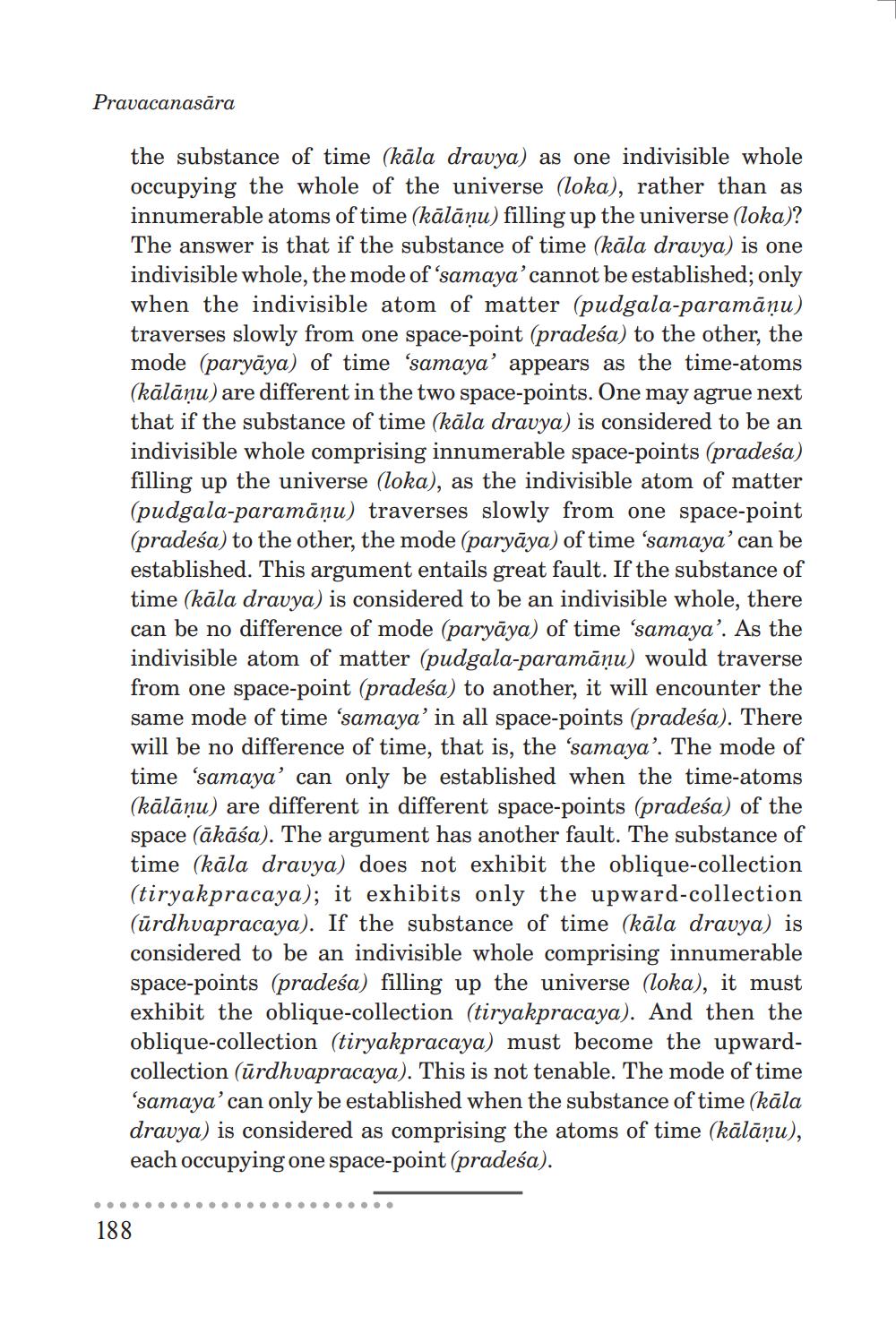________________
Pravacanasāra
the substance of time (kāla dravya) as one indivisible whole occupying the whole of the universe (loka), rather than as innumerable atoms of time (kālāņu) filling up the universe (loka)? The answer is that if the substance of time (kāla dravya) is one indivisible whole, the mode of 'samaya'cannot be established; only when the indivisible atom of matter (pudgala-paramāņu) traverses slowly from one space-point (pradeśa) to the other, the mode (paryāya) of time 'samaya' appears as the time-atoms (kālāņu) are different in the two space-points. One may agrue next that if the substance of time (kāla dravya) is considered to be an indivisible whole comprising innumerable space-points (pradeśa) filling up the universe (loka), as the indivisible atom of matter (pudgala-paramāņu) traverses slowly from one space-point (pradeśa) to the other, the mode (paryāya) of time 'samaya' can be established. This argument entails great fault. If the substance of time (kāla dravya) is considered to be an indivisible whole, there can be no difference of mode (paryāya) of time 'samaya'. As the indivisible atom of matter (pudgala-paramāņu) would traverse from one space-point (pradeśa) to another, it will encounter the same mode of time ‘samaya' in all space-points (pradeśa). There will be no difference of time, that is, the ‘samaya'. The mode of time 'samaya' can only be established when the time-atoms (kālānu) are different in different space-points (pradeśa) of the space (ākāśa). The argument has another fault. The substance of time (kāla dravya) does not exhibit the oblique-collection (tiryakpracaya); it exhibits only the upward-collection (ürdhvapracaya). If the substance of time (kāla dravya) is considered to be an indivisible whole comprising innumerable space-points (pradeśa) filling up the universe (loka), it must exhibit the oblique-collection (tiryakpracaya). And then the oblique-collection (tiryakpracaya) must become the upwardcollection (ūrdhvapracaya). This is not tenable. The mode of time 'samaya'can only be established when the substance of time (kāla dravya) is considered as comprising the atoms of time (kālāņu), each occupying one space-point (pradeśa).
188




